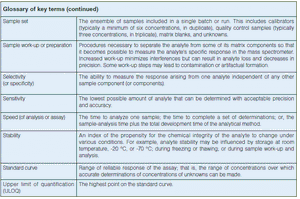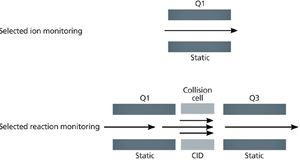Articles by Alfred L. Yergey

The use of a mass spectrometer in quantitative analysis exploits its exquisite selectivity and sensitivity as a detector, allowing a signal to be ascribed to a particular chemical entity with high certainty, even when present in a sample at a low concentration.

The use of a mass spectrometer in quantitative analysis exploits its exquisite selectivity and sensitivity as a detector, allowing a signal to be ascribed to a particular chemical entity with high certainty, even when present in a sample at a low concentration. There are, however, some special considerations that are necessary when a mass spectrometer is used as a quantitative tool.

The quantification of proteins in a complex biological sample is an important and challenging task. Mass spectrometry (MS) is increasingly used for this purpose, not only to give a global survey of the components and their amounts, but also to precisely and accurately quantify specific target proteins.

A review of the essential elements of MS approaches to protein quantification and a critical comparison of the available options






